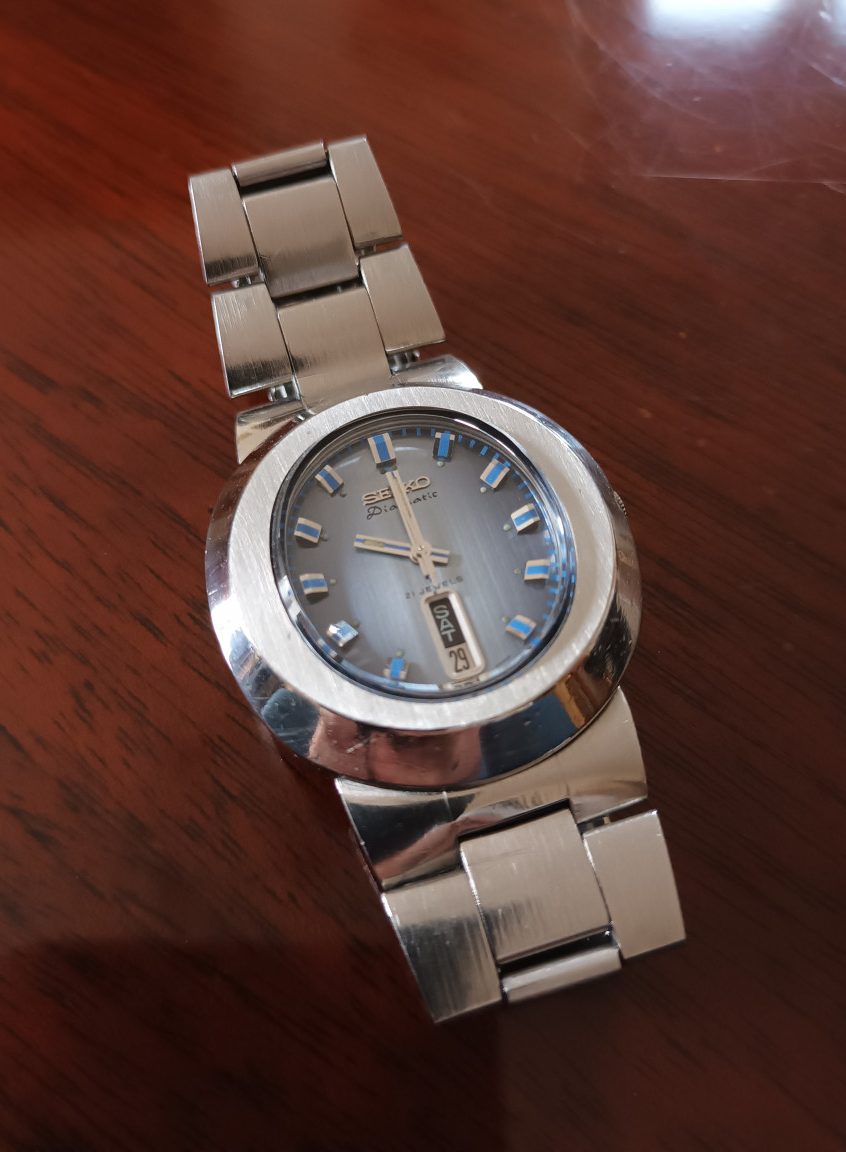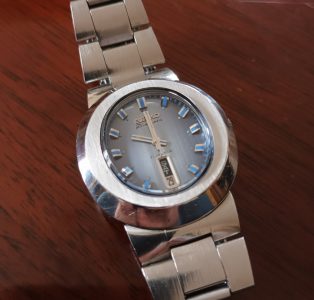As people may know, I have a fairly disparate collection of watches! Although many are quite expensive, the cheapies also get a fair look-in. This aspect has again come to the fore towards the end of last year, after I took a punt on a couple of watch lots at my local auction. Punt being the operative word, as I was not actually going to go for them (so had not inspected), but the bidding was so low that I ended up with them. The two lots comprised of 7 watches – all from about the 70s. The total paid was some £150. I will be honest here: my plan was to sell all of them on!
In the event – and frankly as expected, it was a mixed bunch. I took four that seemed to work down to my chum James Kibble. In the end he decided to buy some. One was rejected outright (as it was a total fake), a Franken would kept for parts (as it had a decent working movement), and two were deemed fine. I obtained £200 so was immediately in the black. So, of the four I kept, one was a scrapper, another was fine, but the other two had problems with their date changing. I decided to send the latter to my watch repairer chum Ritch. He reported back that both had other issues too, that would require some parts and a service. After mentioning that the watches were interesting, and that the repair cost would not be prohibitive really, I gave him the green light!
Mondia Chris-Craft TV.
If there is any watch case shape harking back to the 70’s, it is the chunky square case shape (here being 39mm x 40mm) that is sometimes dubbed “TV”. Many brands adopted this design at the same time, from Zenith to IWC. To my knowledge though, the ultra premier brands – like Patek, VC and AP did not really do so.
Mondia, as readers may know, was started in Switzerland by Paul Vermot in 1935. The brief seems to have been to offer solid, reliable, affordable watches. However by the mid-sixties it ended up being the poor sister of the trio of bands within the Zenith empire in the 60s-80s. Movado was the other. After major issues as a result of the quartz phenomena, various corporate machinations and closures occurred. Movado ended up being owned by North American Watch Co, and Mondia ended up with some Italian investors, after being brought back Lazerus-like. Zenith is of course very much alive, now owned by LVMH. So, Mondia are still going, and looking at their website most of the offerings are quartz and low budget – but are not unattractive.
The watch in question did pique my interest, as it was double-signed with US classic speedboat builder Chris-Craft (see later image). At the moment I have not made much headway over the precise tie-up, but assume that the boat builder did it as a PR exercise – or even offered the watches to their customers. I think the date of this watch is say, 1970-1975. The reference is 99-987-60.
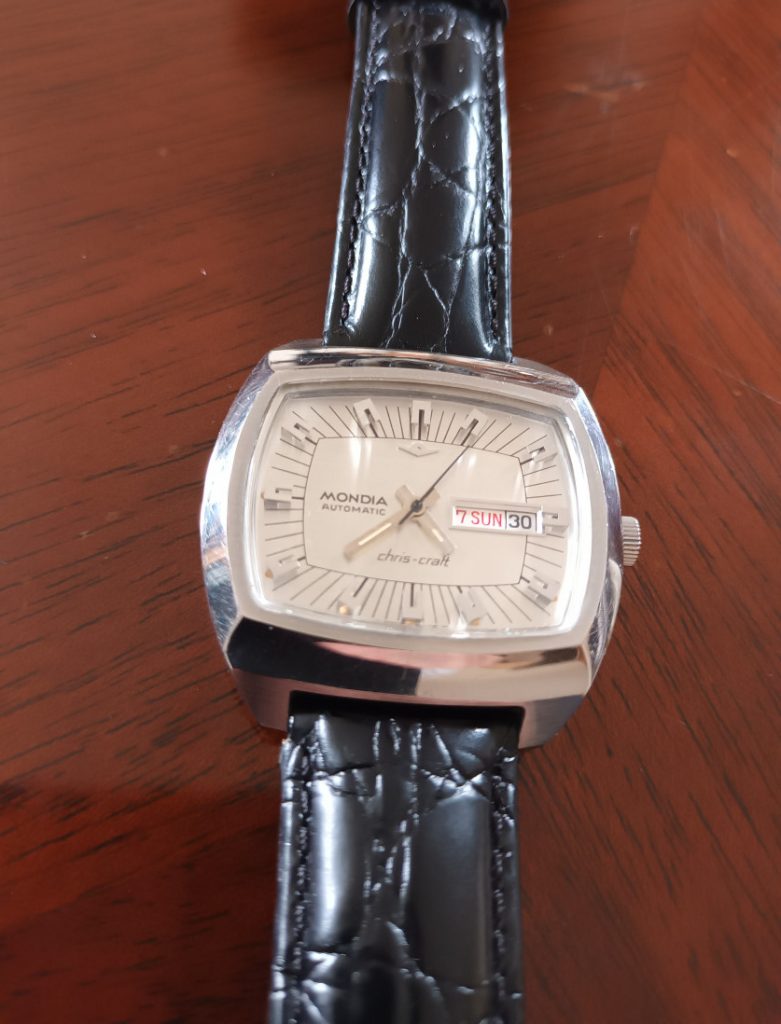
The watch has an interesting dial, silvered, with raised tuning fork shaped indexes and a radiating minute track. There is the Mondia “stetson” type logo at 12, at 9, Mondia Automatic, then at 6, Chris-Craft. The hands are simple and stubby rectangles, with some lume inserted. At 6 there is the framed day/date window. But in addition, one is also notified of the numerical day of the week. This is actually quite an unusual extra feature, albeit a somewhat unnecessary one! The day/date has a partial quick set.
The movement is a a work-horse A S 1876 item. On the solid case back there is much information: the model ref (I assume) is noted as 99-987-60, plus, Stainless Steel, Incabloc, Antimagnetic, Waterproof, Automatic, and Swiss and Foreign Patents Pending! The crown is original too.
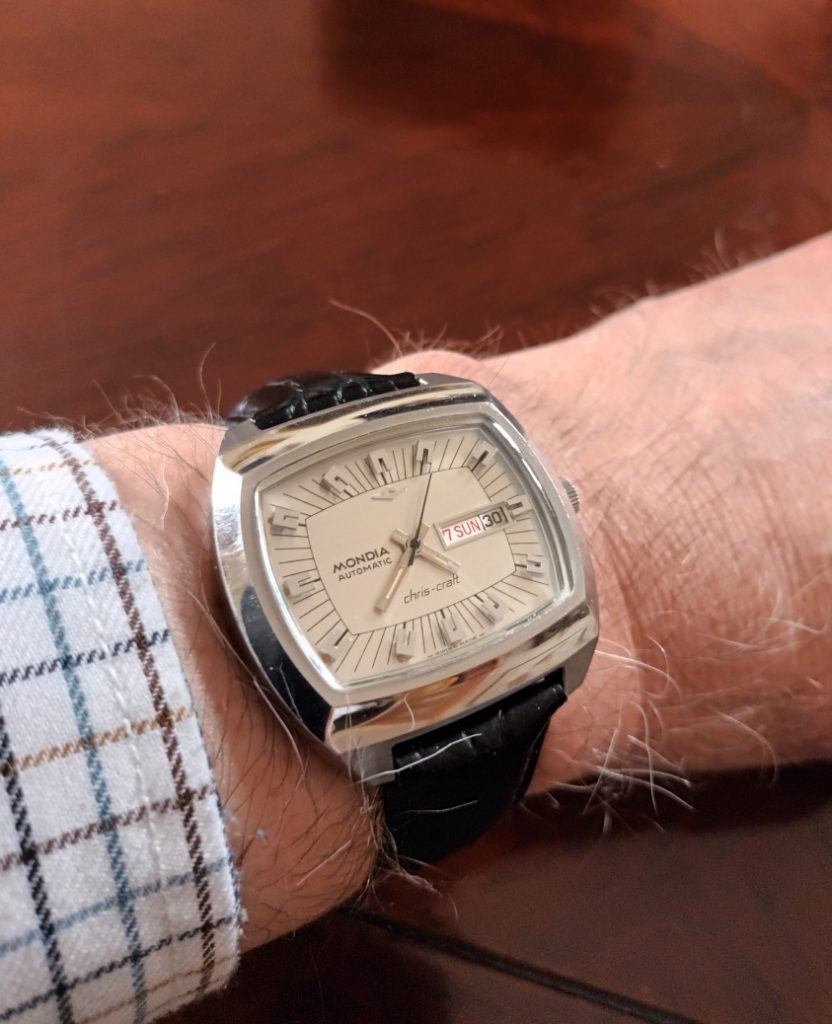
After Rich got the watch and investigated, he reported that the watch had probably never been serviced! As such all inside was goo and the gaskets knackered. The date issue was a broken jumper spring – a new one sourced cheaply on the internet. The case was cleaned and the crystal polished. The movement service was straightforward. New case and crystal gaskets were fitted. Some days on a timegrapher revealed decent accuracy so all was good. Price was some£160. The overall value now I feel is at some £400
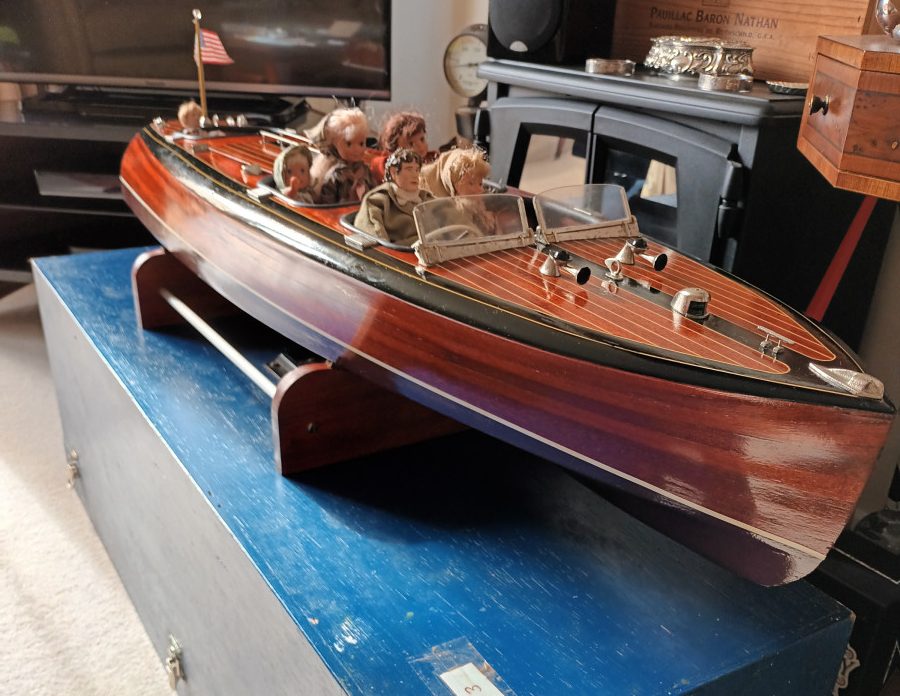
Seiko Diamatic
Now this is really quirky, with a case shape that I am struggling to adequately describe. I suppose oval/spaceship is as good as I can get! Date? I would say late 60’s/early 70’s. The model reference is 6119-5450.
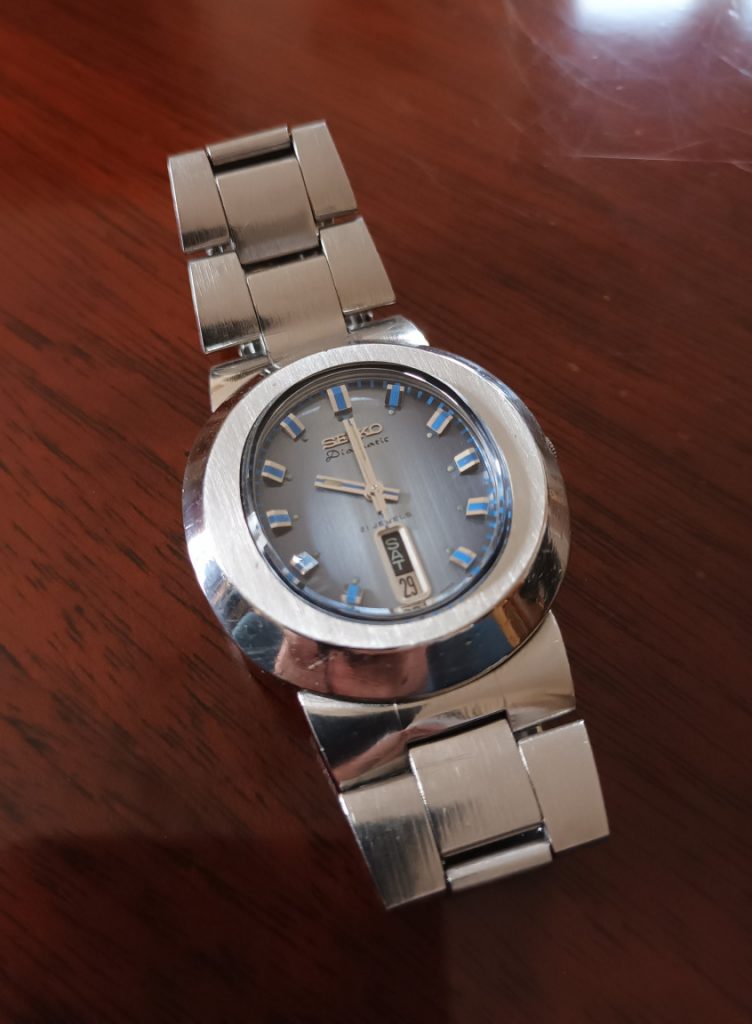
The dial here is a nice greyish-blue with light brushing. There is an outer rail track, and then some chunky wedge-shaped hour indexes with great popping light blue inserts. Small dots of lume are next. Like the Mondia, the main hands are short and stubby with lume. At 12 we have Seiko Diamatic, then at 6 the vertical stack of the framed day/date – white background for the date and black for the day. Cool! Above this, 21 jewels is noted.
Like the Mondia, there is a sold case back that relays a model and serial number. It also boasts “water resistant”. This watch retains it’s original bracelet – in good condition. The movement is an in-house Seiko 6119 with 21 jewels.
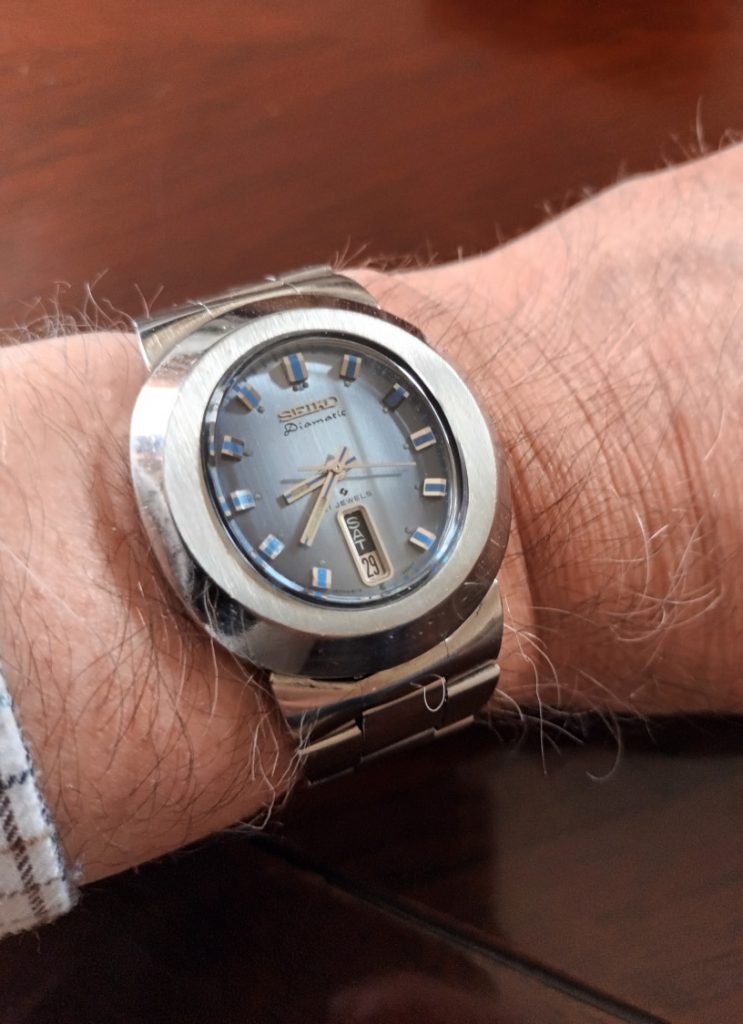
In terms of work to be done, it required a new crown and crystal and these were available online, along with gaskets. The service sorted out the dodgy date change and revealed no other issues so was straightforward. Again, the timegrapher showed all was good.
So, all is well that ends well. As to costs – some £200. Value now – maybe £450.
Bulova Automatic 8003
I like the purity of the dial, tonneau case shape (37mm), and overall size. It has a newish aftermarket bracelet fitted – but it looks contemporary so that is fine. I think this is a little later than the first two – late 70’s/early 80’s.
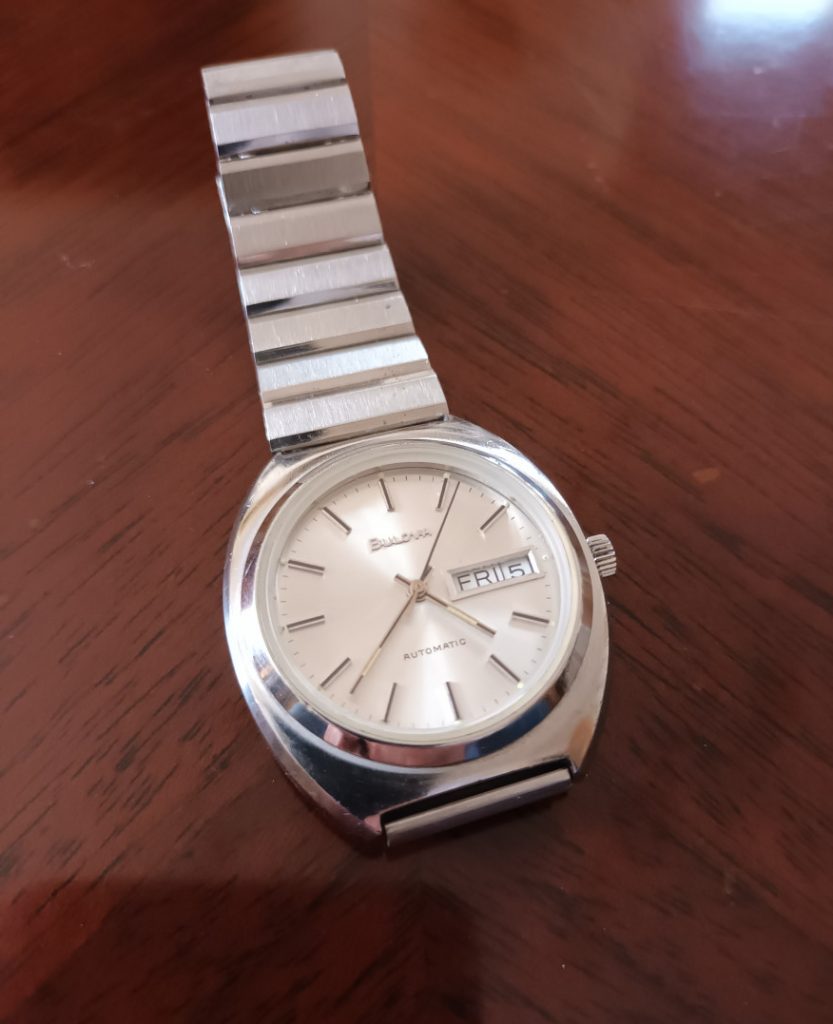
A silvered dial with an outer minute track interspersed with lume dots, then thin rectangular hour indexes with black inserts. The main hands are basic thin items with lume, but with black tips to mirror the indexes. At 12, Bulova. At 6 a framed day/day – nice and clear black on white. Then at 6, simply Automatic.
Once again, the back is solid and notes little information – in fact only the model reference (I assume) – 8003. As to the movement, I think from some internet grubbing it is not in-house, but notes 23 jewels. Retains original crown.
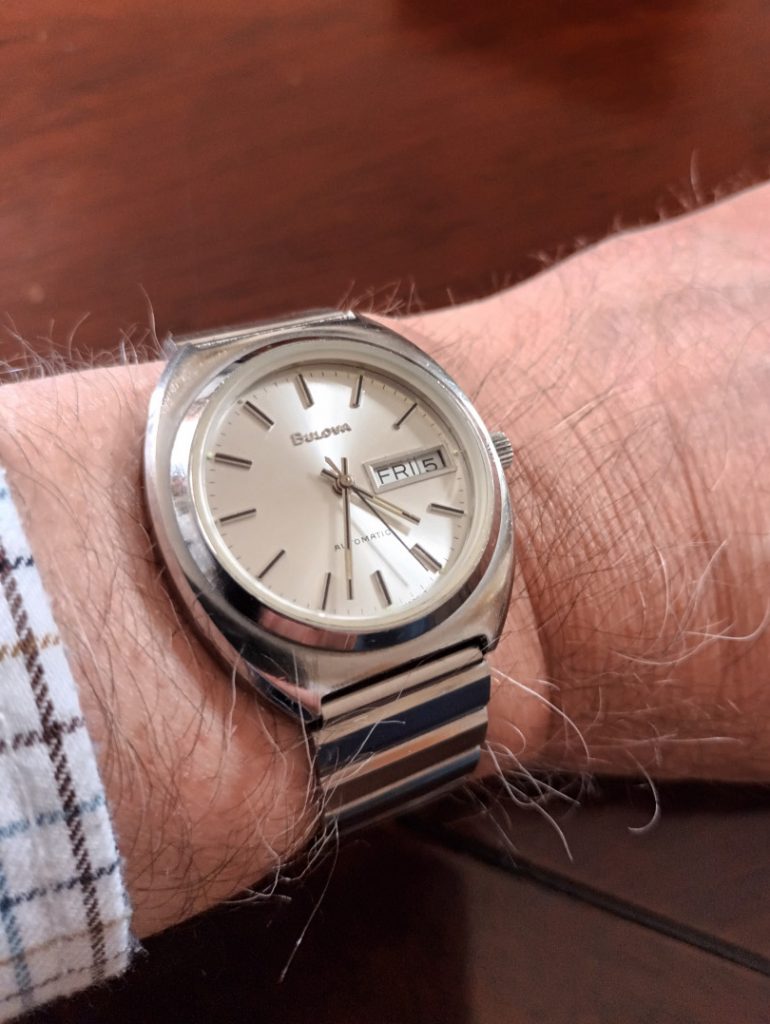
Everything works fine on this watch – including very good timekeeping. It is probably worth some £150.
Bulova is still in business. It was started in the US by Bohemian immigrant Joseph Bulova in 1875. The company was a major success and patented numerous “firsts”. It was a rival to Omega to get onto the Space Programme, and also in the 60’s/70’s they were pioneers of electronic watches, with their best-selling Accutron. The company was eventually bought by Citizen in 2008 and continues to sell in the “affordable” bracket.
Everything was already working fine on this watch – including excellent timekeeping. It is probably worth £200.
So, in conclusion, my total expenditure was some £500. However, the cash from the sold ones – plus the value now of watches retained, comes to around £1,200. So, I am quite content, and now have some unusual watches to boot! Yes, I admit on this occasion I was lucky – but sometimes these cheap job-lots can yield a few gems amongst the rubble.
Words/Images: The Writer

